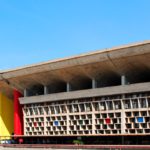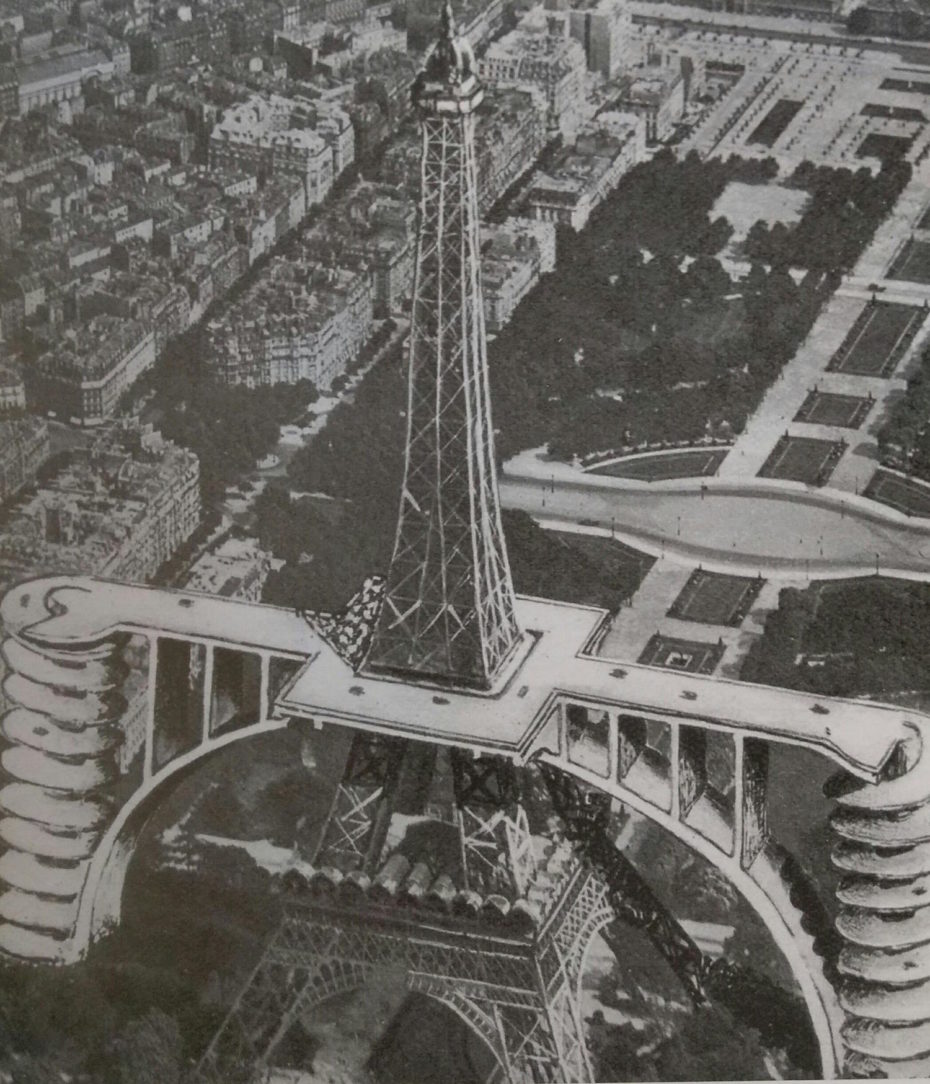
We’ve seen it dressed up every which way; painted yellow, used as a giant advertising billboard; and we even peered inside its hidden apartment, but we’ve never seen the Eiffel Tower looking quite like this. Ladies and gents, you’re looking at the 1936 Eiffel Tower that never was, a mock-up to turn Paris’ Iron Lady into… a French version of Autopia? A highway? We did a little digging to find out…
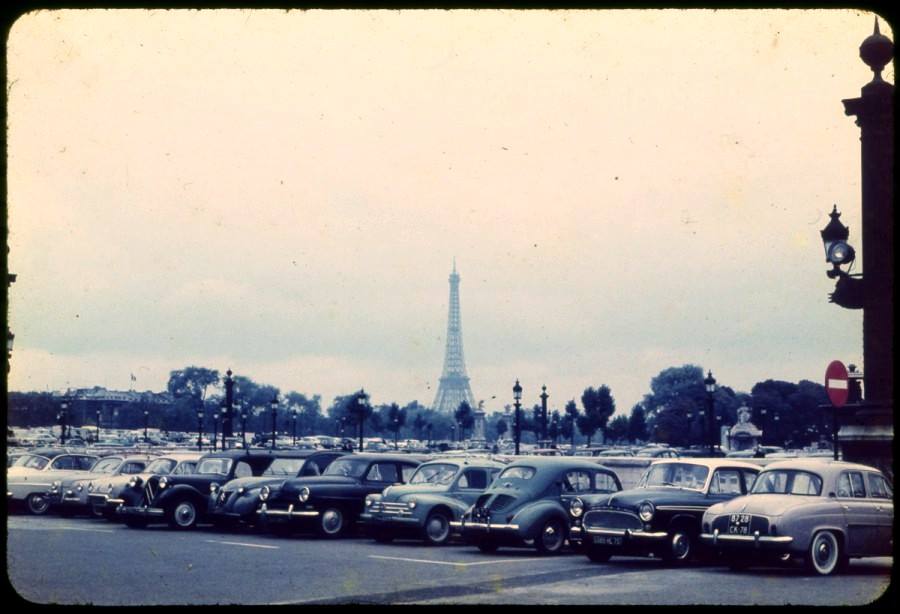
“The car was important then, and I guess it gave a new stroke to architects’ fantasies,” explained Bíró, the reader and architecture buff who first sent us this image, “I guess it has something to do with the revolution that was caused by the popularisation of the automobile in the era.”
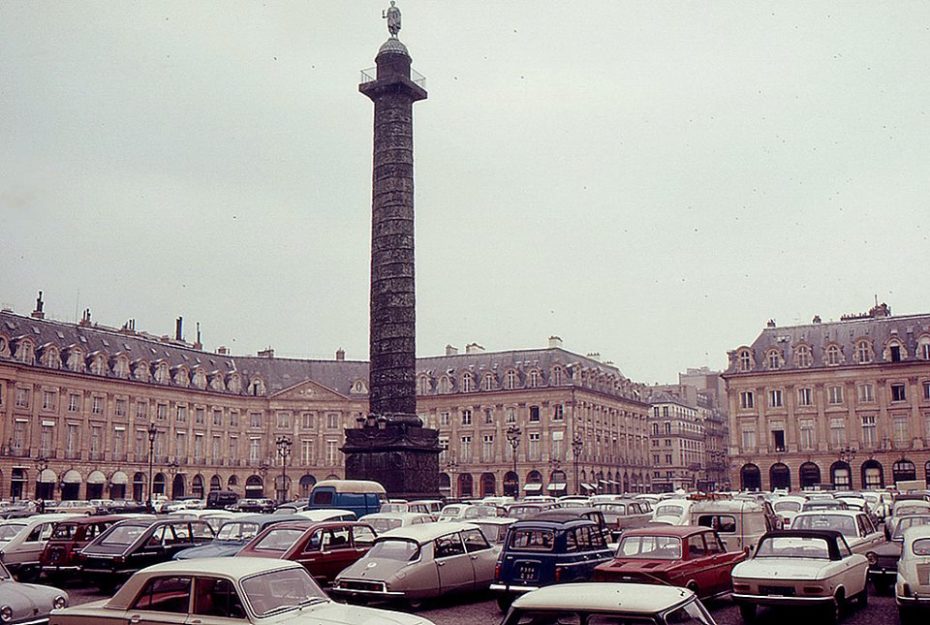
Place Vendome 1968
No kidding. If you look at vintage photographs of Paris, you’ll find that for many years, the city was basically one giant parking lot. There were cars everywhere.
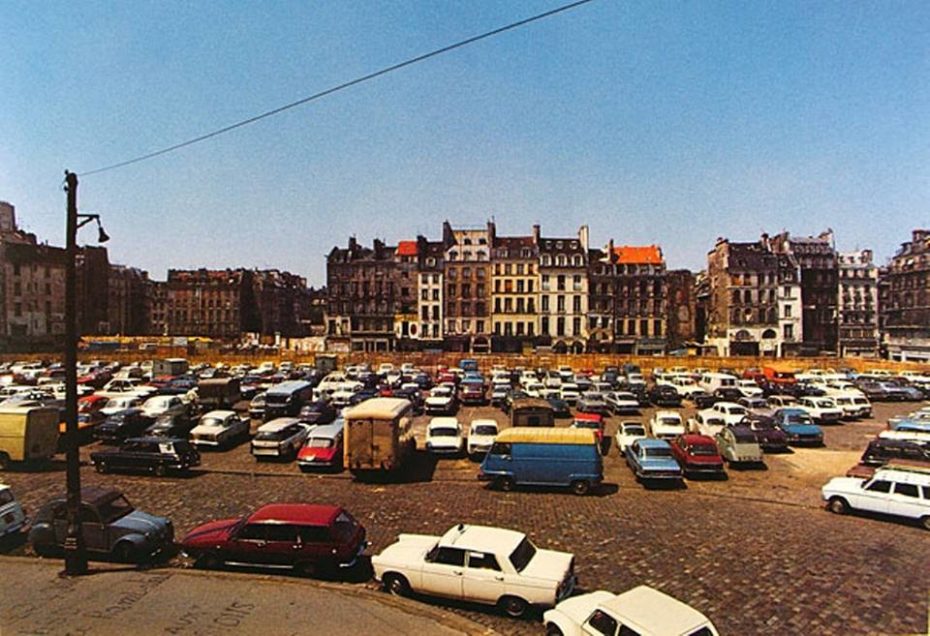
Place Beaubourg, 1970
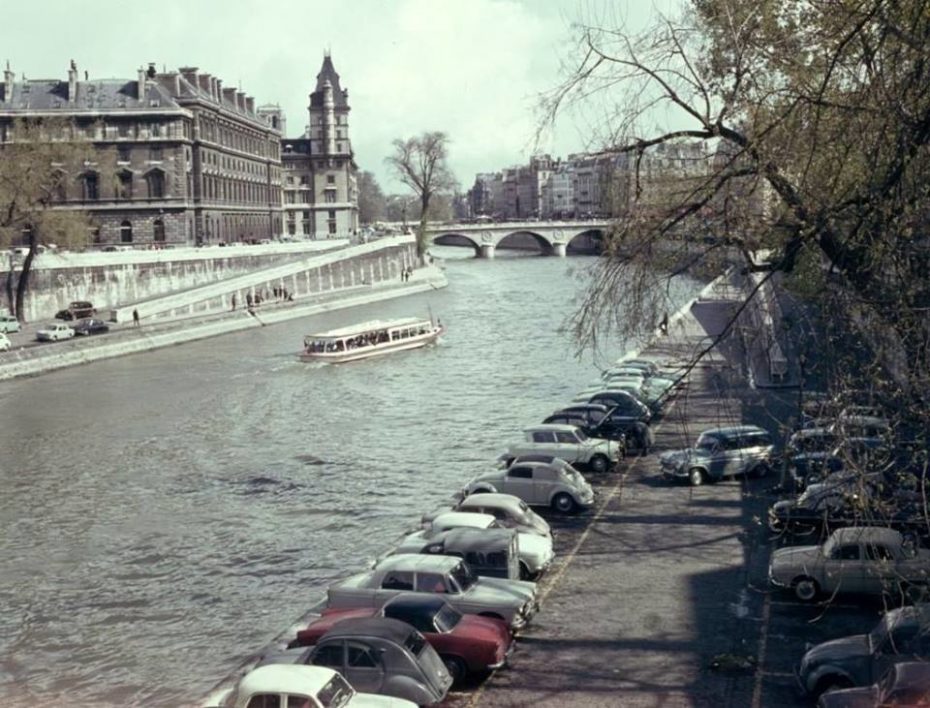
Quai de Seine 1965
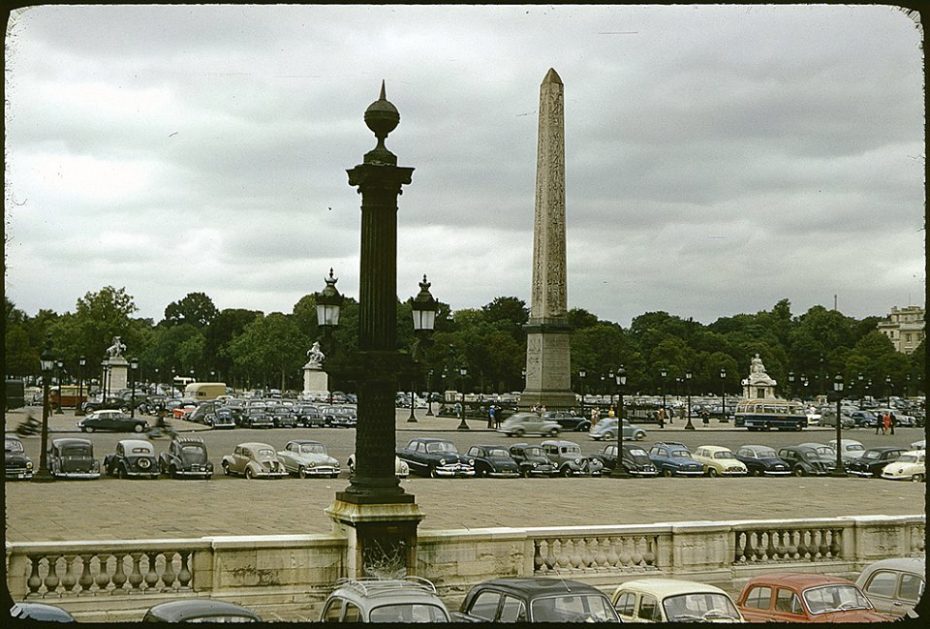
Place de la Concorde 1958
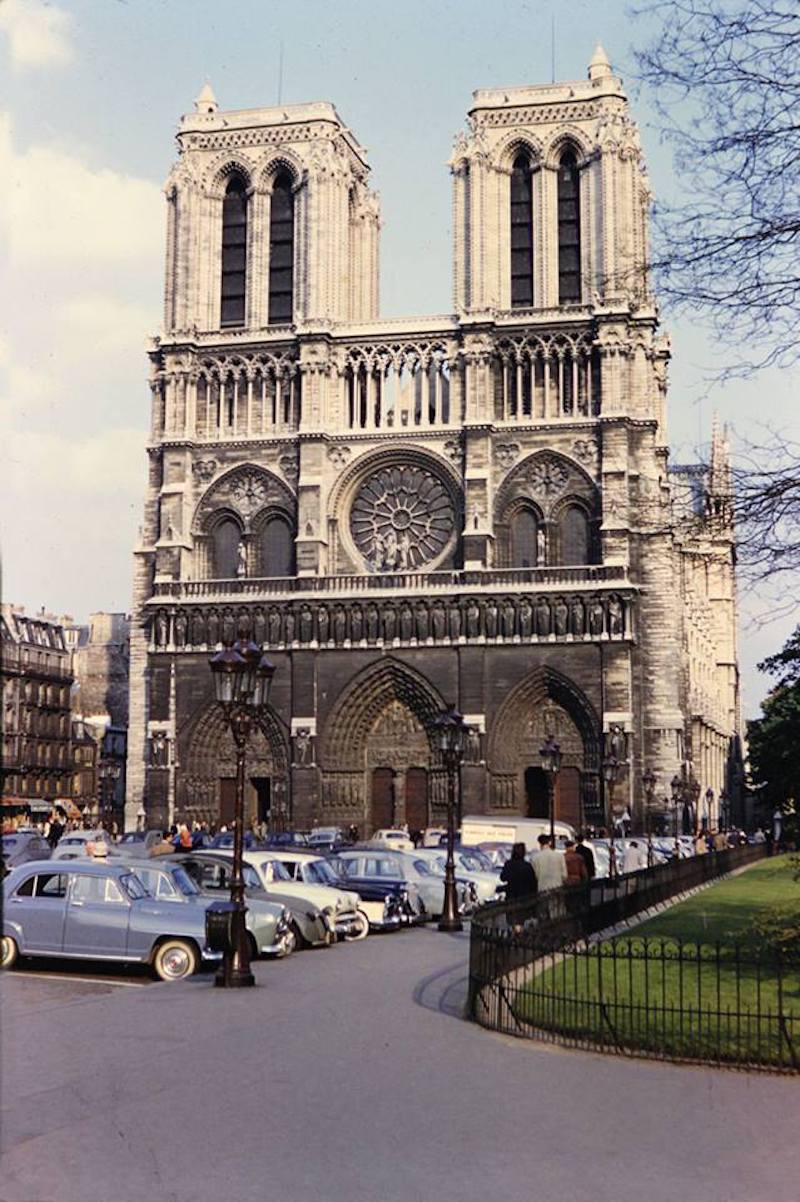
Notre Dame 1960
“When people started to own cars, many of the modernist architects saw it as the future and as the most important object in people’s lives. Just as Le Corbusier designed Ville Contemporaine (The Contemporary City) or its adaptation to Paris, the Plan Voisin“, which never came to be…
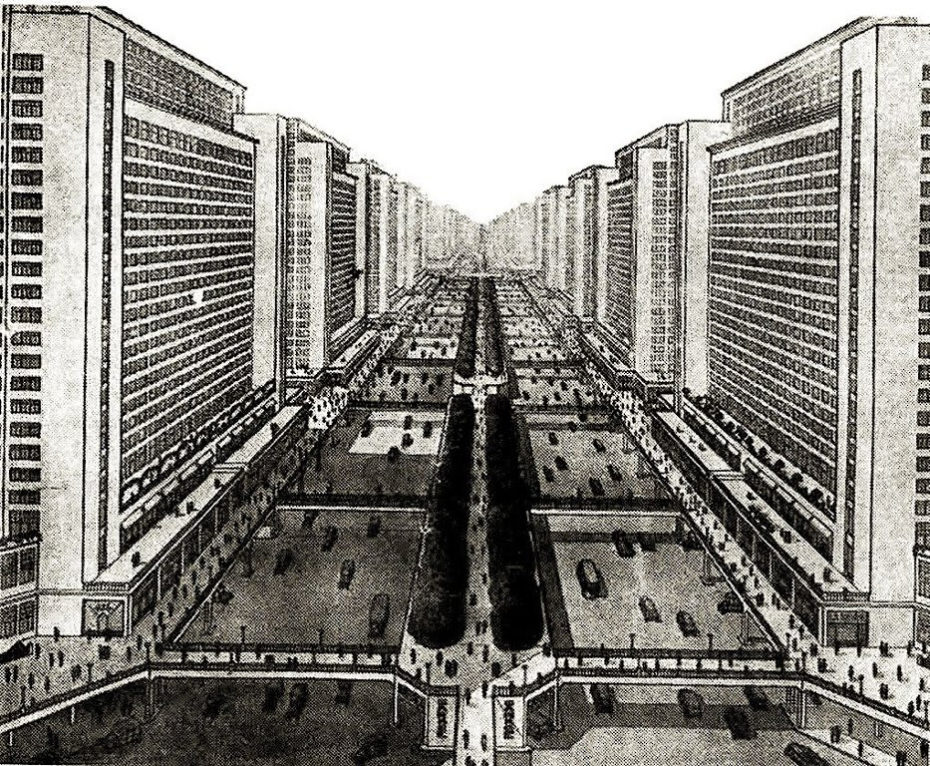
Plan Voisin for Parisby Le Corbusier
So why make the Eiffel Tower car-friendly? The answer is simple: food.
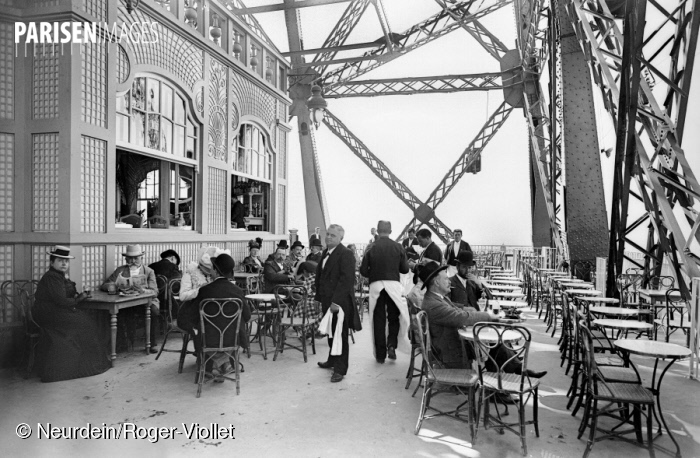
1900 World Fair in Paris. Restaurant on the first floor of the Eiffel Tower.
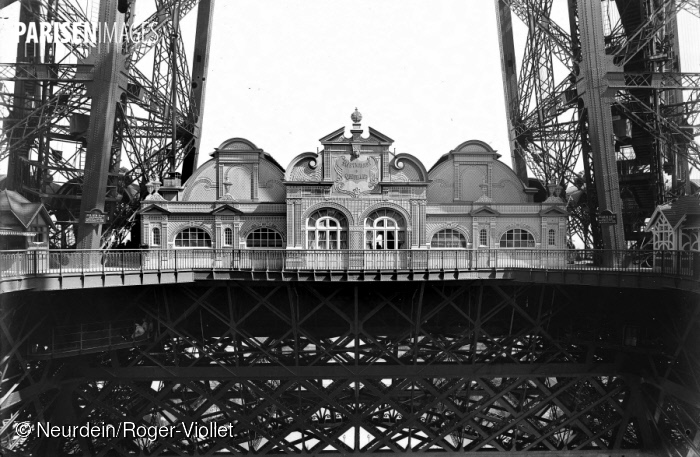
1900 World Fair in Paris. The restaurant of the Eiffel Tower.
The idea was to make the journey to the Tower’s restaurant a little faster. By building two huge, helicoidal ramps on both sides, the futuristic design would have allowed visitors to get to the second level without ever leaving their car.
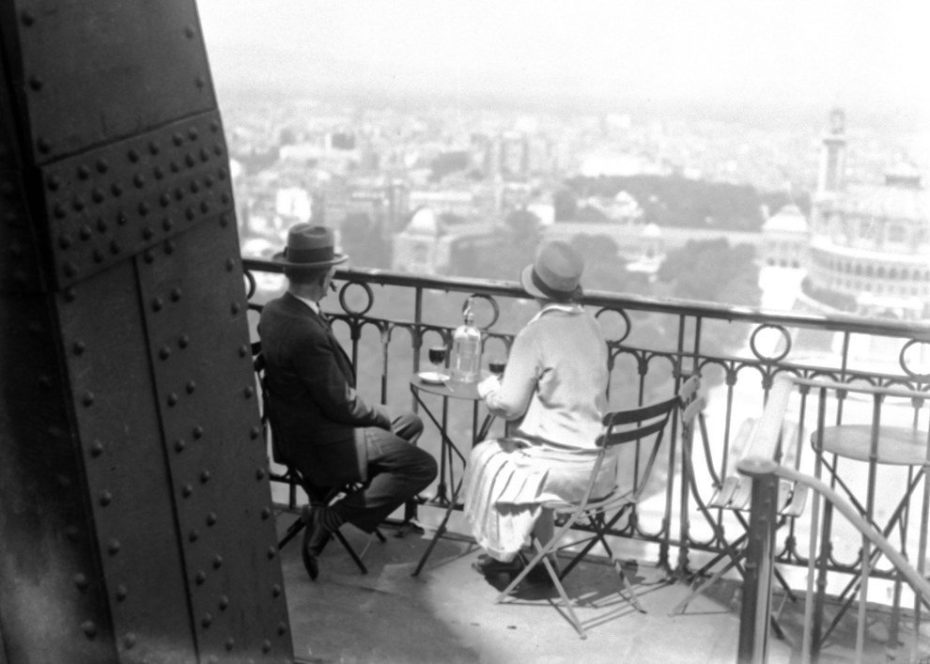
If you’ve ever queued up for the elevators at the Eiffel Tower, you might find yourself agreeing with the designer’s dystopian idea. The man behind the concept of a back-braced Eiffel Tower was André Basdevant. Turns out the engineer even drew up plans for an underground commuter tunnel between France in England as early as 1938 (the actual Chunnel wasn’t built until 1994). But other than that, Basdevant remains a bit of a mystery. There’s only a handful of stock images of him in the depths of the web. Here he is posing beside his design for his (unrealised) tunnel into England:
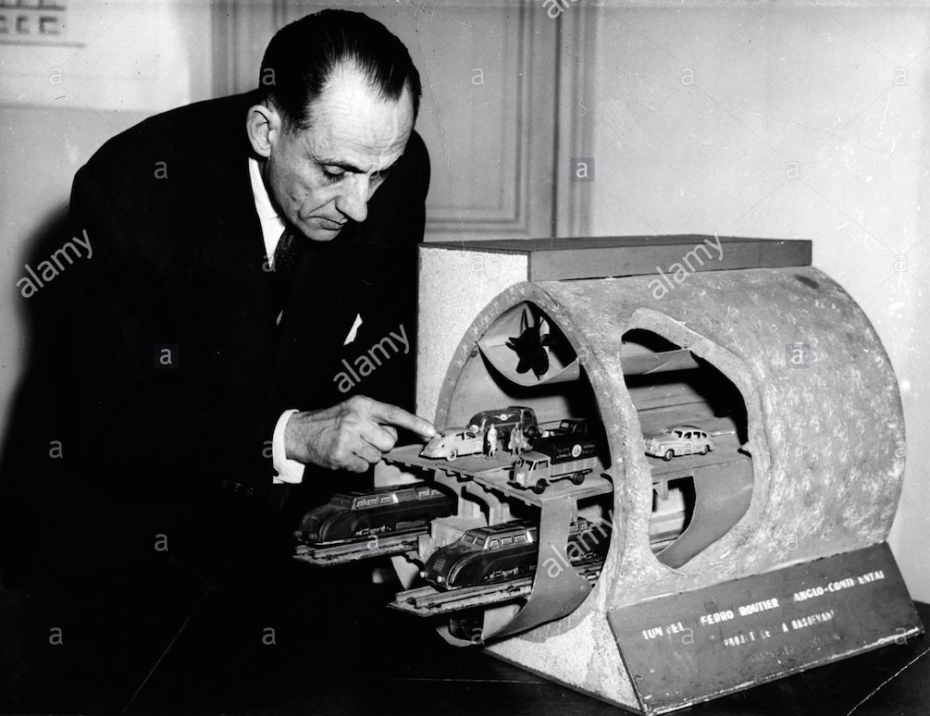
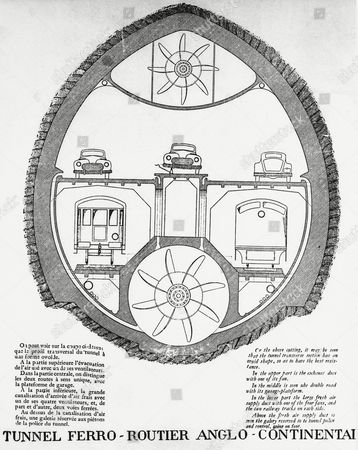
In all fairness, plenty of folks suggested growing the Tower’s waistline, including Gustave Eiffel’s co-designer, Stephen Sauvestre. His take, granted, is much more Edwardian:

What do you say? Is it time the Eiffel Tower had a facelift?!



